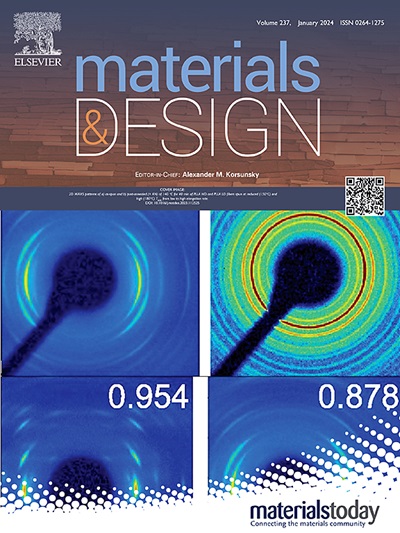Rapid in-situ formation of Cu-Sn full intermetallic compound films and their joint strengthening mechanisms
IF 7.6
2区 材料科学
Q1 MATERIALS SCIENCE, MULTIDISCIPLINARY
引用次数: 0
Abstract
Cu-Sn full intermetallic compounds (IMC) have emerged as promising interconnection materials for power semiconductor packaging, owing to their excellent electrical conductivity and thermal stability. However, traditional fabrication methods often require prolonged processing times, which constrain their application in high-efficiency electronic packaging. In this study, an advanced dual-beam laser co-deposition technique combined with real-time heating was developed to rapidly fabricate pure Cu6Sn5 films in situ, tailored for power electronic packaging applications. Under conditions of 260 °C and 15 MPa bonding pressure, the Cu-Sn full IMC joint achieved a shear strength of up to 72 MPa within only 3 min. The mechanisms underlying the rapid IMC formation and joint strengthening during the thin-film preparation were systematically explored. Furthermore, SiC diode samples bonded with these thin films were subjected to power cycling tests, showing durability exceeding 40,000 cycles at junction temperatures above 160 °C. These findings highlight the potential of Cu-Sn full IMC joints for next-generation power electronics packaging.

Cu-Sn全金属间化合物薄膜的快速原位形成及其结合强化机制
Cu-Sn全金属间化合物(IMC)由于其优异的导电性和热稳定性,已成为功率半导体封装中很有前途的互连材料。然而,传统的制造方法往往需要较长的加工时间,这限制了它们在高效电子封装中的应用。在这项研究中,开发了一种先进的双光束激光共沉积技术,结合实时加热,可以快速原位制备纯Cu6Sn5薄膜,适用于电力电子封装应用。在260°C和15 MPa的结合压力条件下,Cu-Sn全IMC接头在3 min内获得了高达72 MPa的剪切强度。系统地探讨了薄膜制备过程中IMC快速形成和接头强化的机制。此外,与这些薄膜结合的SiC二极管样品进行了功率循环测试,在结温高于160°C的情况下显示出超过40,000次循环的耐久性。这些发现突出了Cu-Sn全IMC接头在下一代电力电子封装中的潜力。
本文章由计算机程序翻译,如有差异,请以英文原文为准。
求助全文
约1分钟内获得全文
求助全文
来源期刊

Materials & Design
Engineering-Mechanical Engineering
CiteScore
14.30
自引率
7.10%
发文量
1028
审稿时长
85 days
期刊介绍:
Materials and Design is a multi-disciplinary journal that publishes original research reports, review articles, and express communications. The journal focuses on studying the structure and properties of inorganic and organic materials, advancements in synthesis, processing, characterization, and testing, the design of materials and engineering systems, and their applications in technology. It aims to bring together various aspects of materials science, engineering, physics, and chemistry.
The journal explores themes ranging from materials to design and aims to reveal the connections between natural and artificial materials, as well as experiment and modeling. Manuscripts submitted to Materials and Design should contain elements of discovery and surprise, as they often contribute new insights into the architecture and function of matter.
 求助内容:
求助内容: 应助结果提醒方式:
应助结果提醒方式:


